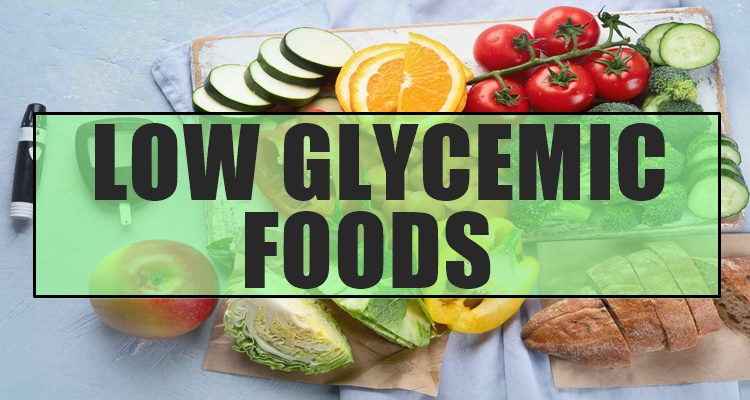A diet of low glycemic foods. Here’s’ a guide.
LOW GLYCEMIC FOODS – If you want to have a healthy body, these foods with low GI must be a part of your diet, and here’s a guide.
The GI or the glycemic index is a tool that ranks carbohydrates by how it affects your blood sugar levels. These foods are breads, cereals, dairy products, fruits, and vegetables. Meat, fish, poultry, nuts, seeds, herbs, spices, and oils are foods that have no GI as they have no carbs.
Carbohydrates, when consumed, are broken down into simple sugars by the digestive system and passed into the bloodstream. Some of them may cause a spike in your blood sugar levels and high blood sugar levels may lead to certain serious health problems like obesity and type 2 diabetes.

GI has three ranks:
- Low: 55 or less
- Medium: 56–69
- High: 70 or above
LOW GI foods
- Fruits: apples, berries, oranges, lemons, limes, grapefruit
- Non-starchy vegetables: broccoli, cauliflower, carrots, spinach, tomatoes
- Whole grains: quinoa, barley, buckwheat, farro, oats
- Legumes: lentils, black beans, chickpeas, kidney beans
These must come with:
- Meat: beef, bison, lamb, pork
- Seafood: tuna, salmon, shrimp, mackerel, anchovies, sardines
- Poultry: chicken, turkey, duck, goose
- Oils: olive oil, coconut oil, avocado oil, vegetable oil
- Nuts: almonds, macadamia nuts, walnuts, pistachios
- Seeds: chia seeds, sesame seeds, hemp seeds, flax seeds
- Herbs and spices: turmeric, black pepper, cumin, dill, basil, rosemary, cinnamon
- Some pastas: Semolina and whole grain pasta
High GI foods to limit or avoid
- Bread: white bread, bagels, naan, pita bread
- Rice: white rice, jasmine rice, arborio rice
- Cereals: instant oats, breakfast cereals
- Starchy vegetables: mashed potatoes, potatoes, french fries
- Baked goods: cake, doughnuts, cookies, croissants, muffins
- Snacks: chocolate, crackers, microwave popcorn, chips, pretzels
- Sugar-sweetened beverages: soda, fruit juice, sports drinks
Here are the GI of these common foods
Fruits
- Apples: 36
- Strawberries: 41
- Dates: 42
- Oranges: 43
- Banana: 51
- Mango: 51
- Blueberries: 53
- Pineapple: 59
- Watermelon: 76
Vegetables
- Carrots (boiled): 39
- Plantains (boiled): 66
- Sweet potatoes (boiled): 63
- Pumpkin (boiled): 74
- Potatoes (boiled): 78
Grains
- Barley: 28
- Quinoa: 53
- Rolled oats: 55
- Couscous: 65
- Popcorn: 65
- Brown rice: 68
- White rice: 73
- Whole wheat bread: 74
- White bread: 75
Legumes
- Soybeans: 16
- Kidney beans: 24
- Chickpeas: 28
- Lentils: 32
Dairy products and dairy alternatives
- Soymilk: 34
- Skim milk: 37
- Whole milk: 39
- Ice cream: 51
- Rice milk: 86
Sweeteners
- Fructose: 15
- Coconut sugar: 54
- Maple syrup: 54
- Honey: 61
- Table sugar: 65
There are a lot of benefits that foods with GI can bring. Some of these benefits include reduced blood sugar levels, lower risk of type 2 diabetes, lowers bad cholesterol levels, helps to lose weight, and many others.
When following this diet, here’s a list of some healthy alternative to high GI foods that you usually eat:
| HIGH GI | LOW GI |
| White rice | Brown rice or converted rice |
| Instant oatmeal | Steel-cut oats |
| Cornflakes | Bran flakes |
| Baked potato | Pasta, bulgur |
| White bread | Whole-grain bread |
| Corn | Peas or leafy greens |
What can you say about this? Let us know in the comments!

